




3-day/2-night journey by ferry between Amami Oshima and Tokunoshima
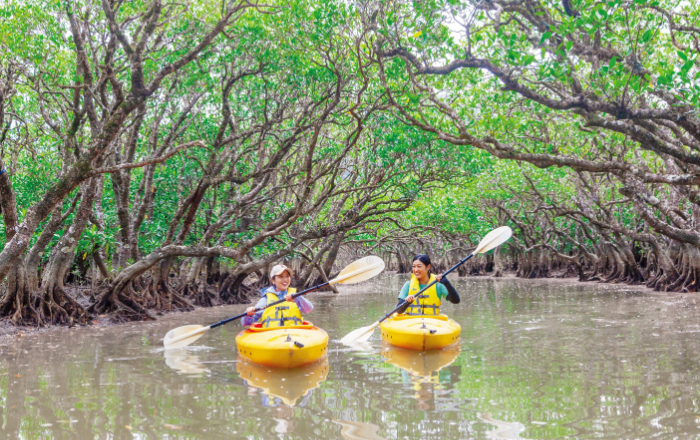
The island boasts the second-largest mangrove colony in Japan. A canoe tour is a great way to observe precious flora and fauna.
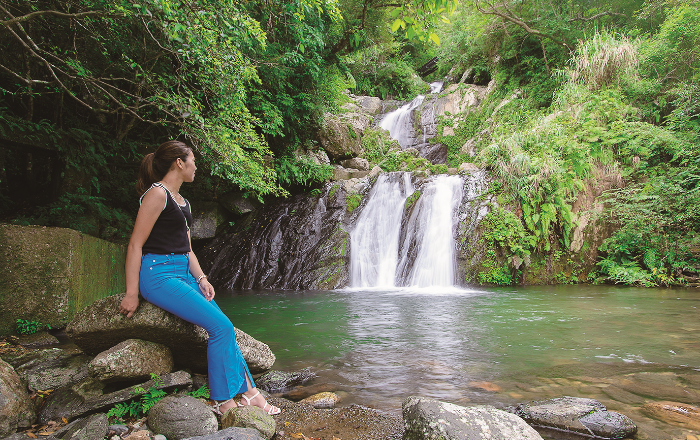
One of Amami’s most famous waterfalls, with a drop of about 30 meters.
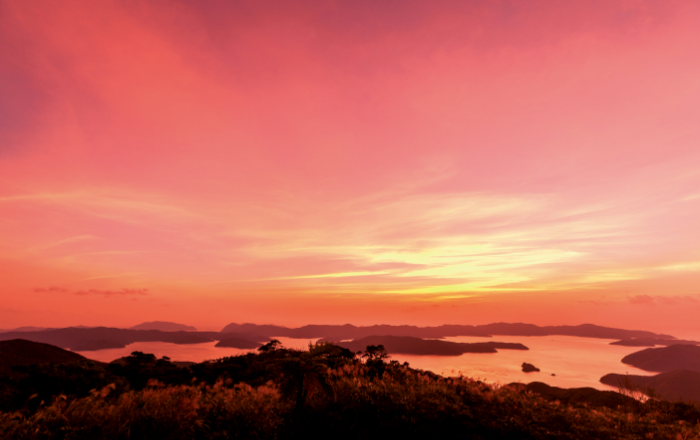
Mt. Yui is the main landmark in the southern region of Amami Oshima, and the Oshima Strait that flows between Kakeromajima and Amami Oshima is a splendid scene to take in.
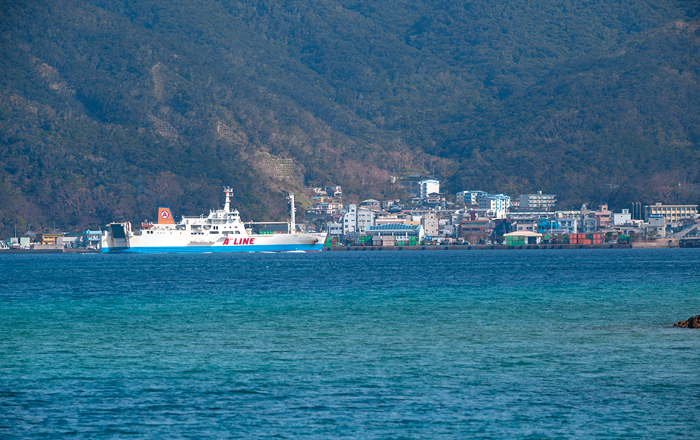
The deeply indented coastline with a white sandy cove is exquisite.
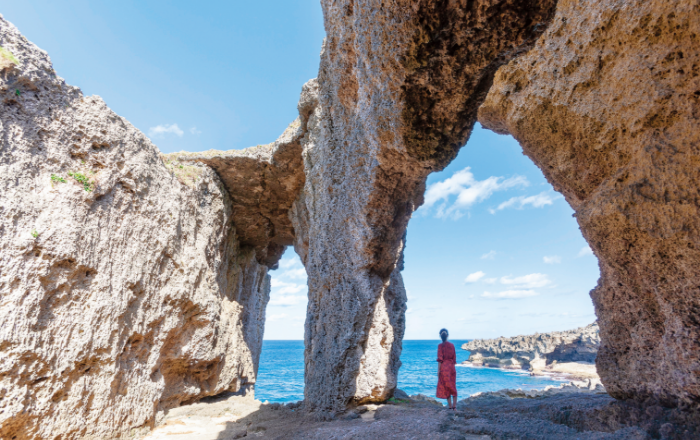
The unusual rock known as Megane Rock (megane, meaning eyeglasses in Japanese) is a popular photo spot.

Granite of all sizes spreading 150 meters east to west, and 100 meters south to north, are indeed works of art created by nature.

Magnificent ocean scenery where the East China Sea and the Pacific Ocean merge unfold as you step onto the observatory at the end of the tunnel made by sago palms planted about 350 years ago.

The cafe run by the Amachan (mothers) of Kanami serves regional dishes made with Tokunoshima’s boar. Enjoy a meal while appreciating the view of the azure sea unfolding before you in a hamlet within a national park.
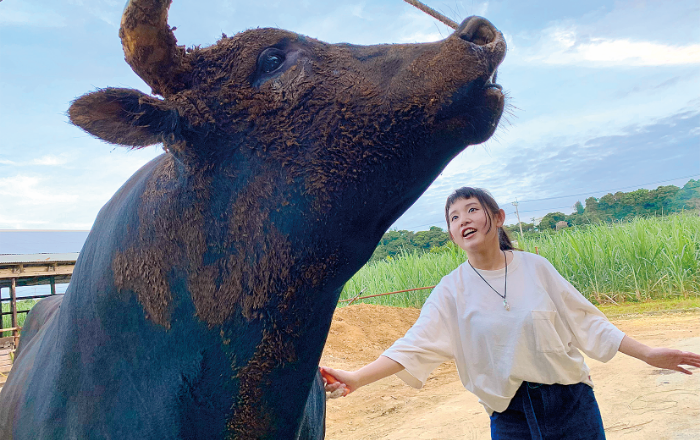
Fighting bulls are raised traditionally on Tokunoshima. You can interact directly with the bulls through a hands-on experience of their care, including brushing.
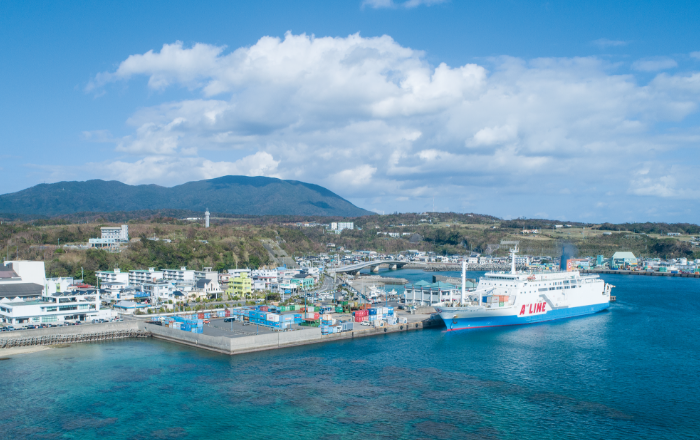
You can see the sunset on the horizon from the boat, depending on the season, as the boat departs in the evening.
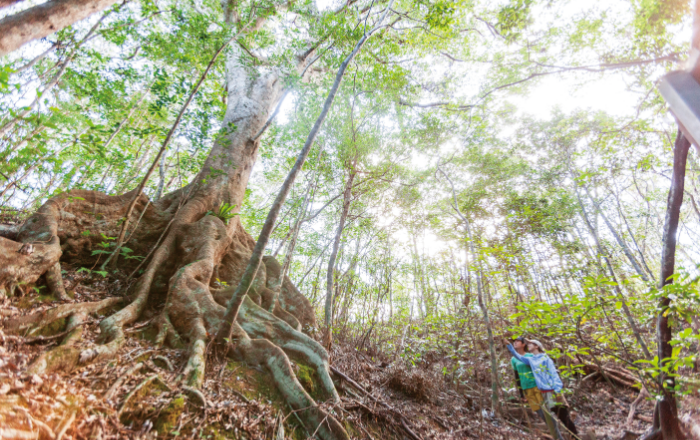
The area is dense with subtropical plants, including the giant brush pot tree, and provides a habitat for rare animals such as the national natural treasure, the purple jay.
*Kinsakubaru’s nature experience requires an Amami Islands’ certified eco-tour guide.
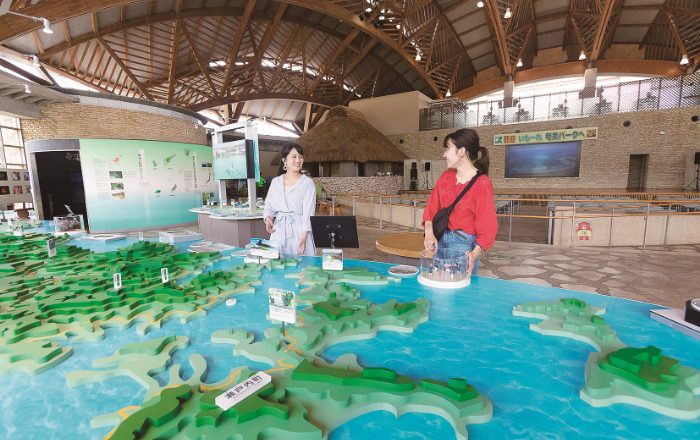
The exhibition center introduces the Amami Islands’ beautiful natural surroundings, diverse culture, and history through visual exhibits. It comprises two facilities; Amami-no-Sato, which serves as a forum for exchange, and the Tanaka Isson Museum that showcases the works of Isson Tanaka, a painter who dedicated himself to capturing Amami’s natural beauty. It is an excellent place for small children to learn the islands’ folk songs and rare ecosystems through engaging installations.